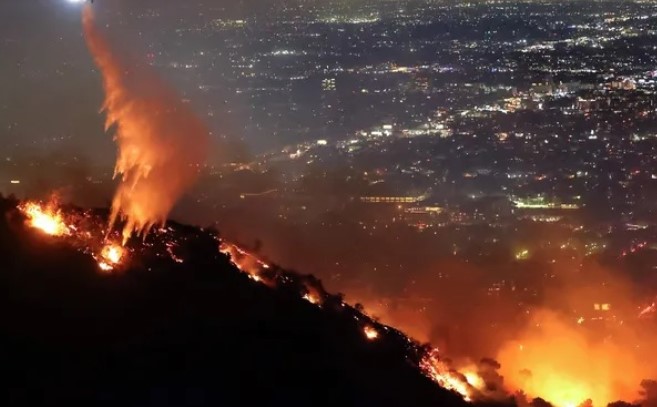
At least 60 people are reportedly dead, hundreds hospitalized, and tens of thousands more left homeless after violence erupted last week in India’s northeastern state of Manipur. Amidst a landscape of blazing buildings and charred vehicles, reports have estimated that about 35,000 people have been displaced due to the fighting. Skirmishes initially broke out on May 3 in Imphal, the state capital, after thousands of people from the minority Naga and Kuki tribes rallied against the re-classification of the majority ethnic Meitei group, which is seeking a special tribal status that provides protections to tribes and communities. Among other benefits, this designation would allow Meitiei the right to purchase land in areas where the tribes currently reside. The Imphal protests quickly turned violent and spread throughout the state, with looting and arson aimed at homes, vehicles, churches, and temples. Witnesses have stated that entire villages have been razed to the ground, with reports of Meitei mobs armed with guns and petrol cans attacking Kuki settlements.
Manipur borders Myanmar and is home to a diverse range of ethnic groups. The Meitei group, a largely Hindu community, is the largest in the state, accounting for slightly more than half the population, and is mostly based in the plains. The Meteis dominate positions within the state government. The Naga and Kuki tribes are mostly Christian and form around 40 percent of the state’s population, residing primarily in the protected, poorly-developed hill districts. Although the recent violence seems to be sparked by the protests, ethnic tensions between the groups have been simmering for years, with a long history of violent clashes. Issues over land rights and crackdowns on minority groups have frequently served as a flashpoint, exacerbating tensions and resentments between ethnic groups. In late April, the eviction of Kuki villagers by the government under the purported rationale of forest preservation led to clashes between demonstrators and police, with the security forces reportedly using batons, tear gas, and rubber bullets to disperse the crowds.
Tensions over the Meitei community’s petitions for “scheduled tribe status” predate the ongoing violence, as the Meitei have demanded the re-classification for a decade. The current wave of violence was triggered after Manipur’s high court urged the state government to approve the Meitei’s demand for the scheduled tribe status. In addition to certain land rights, the constitutionally-recognized status creates quotas for designated populations to receive a share of government jobs and college admissions. While these quotas are designed to ensure that marginalized communities are represented equitably in society, critics say the Meitei are sufficiently socially and economically advantaged without the designation. Reports also indicate that many in the Naga and Kuki tribes are anxious that offering this status to the Meiteis would allow them to purchase land in the hills the two tribes occupy and could result in their displacement from a protected area they have occupied for decades.
Tensions in Manipur have increased since the 2021 coup in neighboring Myanmar, as thousands of refugees from Myanmar’s Chin tribe have reportedly fled the junta’s deadly repression and taken refuge in Manipur. The Chin share ethnic ties with the Kuki tribe, who have alleged that the government has unjustly cracked down on the refugees since their arrival. The Meiti, in turn, have expressed concern that the influx of Chin will allow the Kuki to outnumber the Meiti eventually. Porous borders and common ethnic ties on both sides have made restricting the flow of people difficult. Manipur’s other ethnic groups fear that the influx of refugees threatens the availability of state resources and land availability.
Nearly 10,000 Indian troops and paramilitary forces were deployed to Manipur to rein in the chaos and enforce a curfew that was recently relaxed. Manipur’s governor issued a shoot-on-sight order that gives the forces the authority to fire on crowds in “extreme cases.” Seeking to control the flow of information, internet access has been shut off in the state until May 13, hindering assessments of conditions on the ground. The government has yet to confirm the death toll or whether any of the approximately 60 deaths reported by Indian news outlets have resulted from the shoot-on-sight order. Statements by a military spokesperson that forces have secured “firm control” over the most severely impacted districts are difficult to verify with the tight controls on the flow of information.
Indian Prime Minister Narendra Modi has yet to speak publicly about the unrest, leading to widespread anger among Manipur’s residents and scathing criticism from opposition politicians. Critics have accused the prime minister and his Bharatiya Janata Party (BJP), which controls the state’s government, of poor governance at both the state and federal levels by ignoring long-simmering tensions. Further, some critics and local leaders in Manipur have attributed blame to the political influence of the BJP and Rashtriya Swayamsevak Sangh (RSS), accusing the Hindu nationalist organizations of exacerbating long-standing tensions in the community. Although the recent unrest was triggered by the High Court’s decision, some local leaders believe the scale and severity of the violence, particularly against churches, has been catalyzed by the growth Hindu nationalism and its influence among the Meitei. They claim the BJP has made a concerted effort to create a nationalist Hindu identity for the Meitei community, even though a portion of them practice an indigenous religion other than Hinduism, seeking to use them to advance the BJP’s political agenda in Manipur. While the worst of the violence seems quelled for the moment, with the Meiteis’ re-classification decision still pending, coupled with the prevalence of pre-existing ethnic tensions and the continued strength of the Hindu nationalist movement in India, sustainable peace in Manipur may prove elusive.





